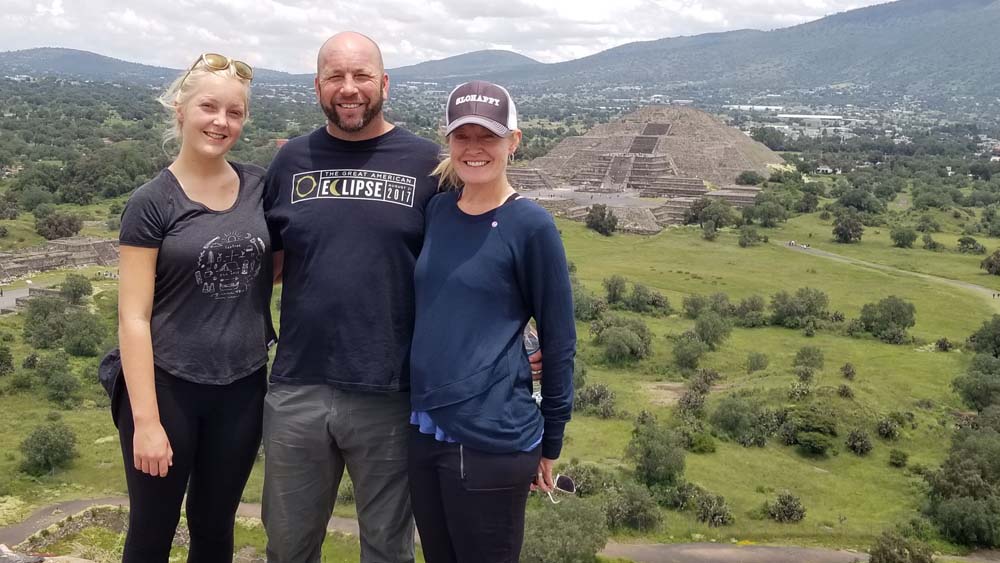 Adventuriety
Adventuriety
I think history is fascinating and complicated. What else could it be? Life is complicated and when you view a whole bunch of complicated lives over a period of time, viola, you have an intricate story called history. For me, understanding a timeline helps tremendously in understanding the history of a location. I am not a very good information pre-loader…I am always too busy planning the logistics of travel to read up on the places we are visiting. I know people, I am envious of people, who read books across multiple topics before they ever set foot in a place. I arrive, look around, ask questions, get confused and then I learn. Maybe someday it will be the other way around, but that is my process now and I am going to embrace it. This process (that I am embracing) had me completely confused in Mexico City.
I booked a private tour on our second day in Mexico City. We often take tours when we are in developing countries because it’s a little harder to get around and a little more intimidating, especially with kids. You just don’t know what you might get into when you sign up for a tour and this was no different. The company was highly rated on TripAdvisor (which I learned at some point can either mean nothing or everything Mt. Vesuvius and Trip Advisor), focusing on two popular tourist destinations in proximity to Mexico City; the pyramids of Teotihuacán and the Basilica of Our Lady of Guadalupe.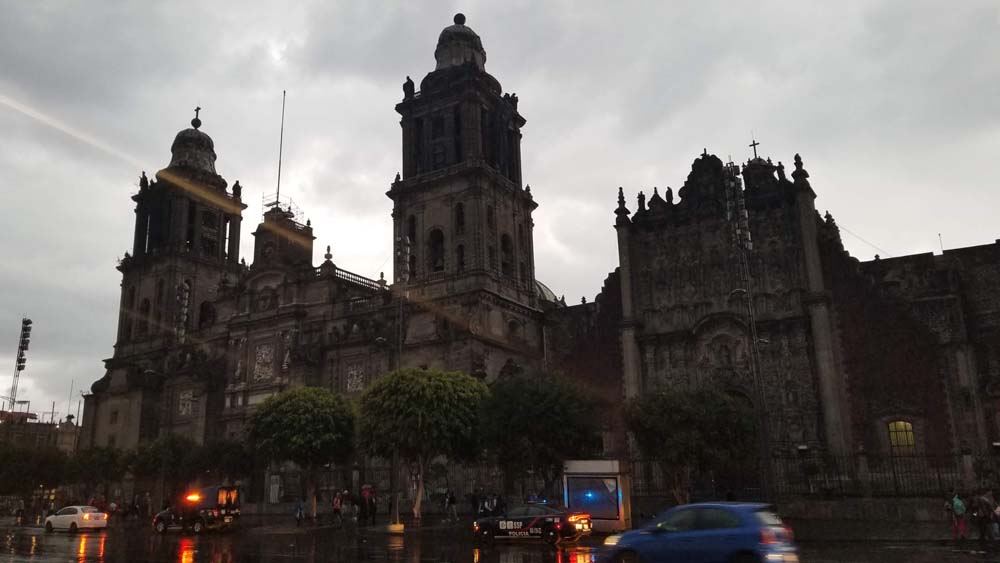
Our tour started with a drive through the very heart of historic Mexico City and past the ruins of Templo Mayor, the main temple of the Mexica (Aztec) in the capital city of Tenochtitlan (Mexico City). You can still see the remains cuddled up against buildings like the Metropolitan Cathedral (above) in the Historic Center of Mexico City (added to the UNESCO World Heritage List in 1987 in case you’re interested).
According to tradition, the Templo Mayor is located on the exact spot where the god Huitzilopochtli gave the Mexica people the sign that they had reached the promised land: an eagle perched on a nopal cactus with a snake in its mouth. This symbol flies on Mexico’s flag today.
Our first stop of the day, the Aztec ruins of Tlatelolco, a pre-Hispanic (before the influence of Europeans) city-state, very near our apartment. These ruins are interesting because they are a good example of Aztec ruins buried literally and figuratively by Europeans and the Catholic church (Sailboats and History in Mexico City).
The ruins have been excavated, at least partially, and now share the view of aging, yet modern buildings with the Catholic church.
Here you can see ruins representing multiple generations of the Aztec rulers of Tlatelolco, the Catholic Church built to convert the Aztecs when the Spanish arrived, and a modern museum to explain it all.
Now, we were finally on our way to see the pyramids! It takes us a while to drive out of the congestion of the downtown area. Colorful homes dot the hillsides in a citywide beautification effort.
Tours are always interesting on some level, usually, more of “a learning experience” than you sign up for because you always end with some surprise stops like a visit to a “local artisan” to learn about culturally and historically important handicrafts. In China we visited a Cloisonné enamelware factory, in Tanzania we visited the Masi, and on our way to the pyramids, it was a stop to learn about obsidian and the maguey plant.
The maguey plant, also known as agave and the century plant, is a hearty succulent that has a lot of uses both past and present. Over the years people have clothed themselves, defended themselves and gotten drunk on this multi-purpose plant. One can make, weapons, paper, needles, fiber, clothing, and alcohol in the form of mezcal and pulque. Wait, what about tequila you’re thinking? Well, Tequila is a distillate made from blue agave and must be produced in the Mexican state of Jalisco. Mescal can be made from any of the 30 distillable types of agave and anywhere in Mexico. In other words, tequila is a type of mescal, but a mescal is not always a tequila. And the other difference…Mescal tastes, in Scott’s words, like an “electrical fire” and I would have to agree, but I have heard it will cure travelers’ stomach issues. And pulque, in my words, tastes like sour milk.
I feel mixed about these detours. I think the tour operators probably get a kickback and that’s okay, they’re trying to survive and I am happy to help the local economy. But these “local places” that we end up at all look really nice as if all of the tour operators stop at the same place, maybe that’s because the stop is interesting enough and the place has clean restrooms, but shouldn’t more than just one place benefit from the tourists?
Obsidian, like the maguey plant, is historically and culturally significant to the area. Obsidian was one of the most important materials in Mesoamerica and Teotihuacán controlled the trade of this commodity due to its location near two important deposits. Obsidian was used to make tools and weapons and now it is used to make decorative masks, jewelry, and statues.
We usually buy something, just like today when we bought a small, obsidian mask that represented something. I thought it was kind of creepy, but Scott liked the colors in the obsidian. Although it was carefully wrapped in newspaper and didn’t seem all that fragile, it got broken on our way back into our apartment. Scott reflected that maybe just giving money to all the people that you pass begging on the streets is more meaningful than purchasing something from one these tourist rest stops that seem to be doing a booming business. Ironically, the mask symbolized the difference between materialism and nature.
It was afternoon by now and we had driven by Tenochtitlan, walked around Tlatelolco, and finally, we were headed to Teotihuacán! I don’t know if you’ve noticed but there are some very long and complicated “T” words all floating around in close proximity. Our guide spoke good English, but it was English with enough accent to make the endless flow of facts a little more challenging to follow. At the end of the tour, I was on information overload with no idea of how these three “T” words would fit on a timeline. So, with hours of first asking why and then asking Google, I invite you to sit back, relax and enjoy my condensed version of the history of the parts of Mexico we experienced today…in the correct order.
Between 100,000 and 50,000 years ago, Homo sapiens (modern humans) began to migrate off of the African continent and populate the world. Only 16,000 years ago, these early people crossed over the Bering Strait (the strip of land connecting Asia and North America, now mostly submerged) and headed down into the Americas. During this time, most humans in “Mexico” were doing what all of the humans in the world were doing, living a nomadic life, following food, and keeping to themselves. Although the people in the Americas lagged a little behind the rest of the world, between 9000 and 2000 years ago, humans began to control nature instead of being controlled by it. People gathered in small communities and began to farm and raise animals for food. This is called the First Agricultural Revolution.
Finally, about 3,200 years ago (1200 BCE), the first Mexican societies began to emerge. The Olmec was a mysterious civilization that prospered from 1200 to 400 BCE and is generally considered to be the forerunner of all Mesoamerican cultures including the Maya and Aztec. And what exactly does Mesoamerica mean? It is a historical and cultural region extending from Central Mexico to northern Costa Rica in which pre-Hispanic societies thrived. So yes, that was before Columbus and the Spaniards arrived to change everything. The Olmecs lived in southern Mexico and worshiped scary deities including the original Quetzalcoatl (I know you don’t know what the heck that is…yet!). And now finally we have arrived at Teotihuacán, the place that Scott and I took the tour for…
The ancient city, Teotihuacán, which might mean “the place where the gods were created” is located about 45 km north-east of Mexico City. Although it was the Aztecs that named the city Teotihuacán(the original name is yet to be deciphered from some surviving symbols at the site) when they stumbled upon the ruins, it was built about 400 BCE, 1,000 years before they arrived in Central Mexico.
Teotihuacán developed into one of the largest ancient cities in the Americas, with at least 25,000 and up to 125,000 inhabitants, covering about 20 square kilometers at its zenith. The people had a religious calendar and complex religion based on the serpent Quetzalcoatl of the Olmec Civilization which the Aztecs were still worshiping 1,500 years later. You’re beginning to notice that it’s all connected, right?
There are three pyramids: the Pyramids of the Sun and the Moon, and the Temple of Quetzalcoatl (also known as Temple of the Plumed Serpent) connected by a massive central road, Calzada de Los Muertos or The Avenue of the Dead.
The Avenue of the Dead (Miccaotli to the Aztecs) is about two miles long, running north to south and connecting the Pyramid of the Moon (in the background) to The Temple of Quetzalcoatl.
Pirámide del Sol
The Pyramid of the Sun (behind Scott and Ashley), located on the east side of the Avenue of the Dead is the world’s third-largest pyramid, surpassed in size only by the Pyramid of Giza (Egypt) and the Pyramid of Cholula (Mexico).
When Teotihuacán was at its height, the pyramid’s rocks were covered in plaster and painted bright red. If you look carefully, you can still see evidence of plaster and fading red paint. We carefully climbed the pyramid’s steep and uneven steps to the sound of jaguars and screeching eagles. Hawkers stood at the base of the ruins selling toy whistles that made these noises along with blankets, jewelry, and obsidian carvings. The noise was both irritating, deafening, and startling.
This is at the very top of the Pyramid of the Sun looking north-east (ish). It is truly remarkable that these structures were built without the use of metal tools, pack animals or the wheel.
Pirámide de la Luna
This photo is taken almost at the top of the Pyramid of the Sun and is a great view of the Pyramid of the Moon. The Pyramid of the Moon, located at the north end of the Avenue of the Dead, is smaller than the Pyramid of the Sun, but its summit is nearly the same height because it’s built on higher ground. Now, take a look at those little mini pyramid temple-looking things near the base of the Pyramid of the Moon, especially the ones on the right side…
We climbed up that one! The steps are very steep but the view is great. I was surprised at the number of ruins that one could climb up and explore.
On top of the temple platform, Ashley looks out over the Plaza de la Luna (the Pyramid of the Moon is just behind her) towards the Pyramid of the Sun (where we started). You can see people walking on the Avenue of the Dead. There are 12 temple platforms and some experts attribute astronomical symbolism to the total number of 13 (made up of the 12 platforms plus the pyramid), an important number in the day-counting system of the Mesoamerican ritual calendar.
The altar in the plaza’s center is thought to have been the site of religious dancing.
The third, smaller, and more ornate pyramid El Templo de Quetzalcoatl (Temple of Quetzalcóatl) lies at the southern end of The Avenue of the Dead.
The Temple of Quetzalcóatl is situated in La Ciudadela (the Citadel), a large square courtyard covering 38 acres.
The lush, green landscape is a result of the rainy season. The ruins were especially beautiful contrasted against the bright colored grass. Our guide told us that in the dry season when everything is brown, the pyramids blend into the landscape.
Templo de Quetzalcóatl
Quetzalcóatl, is the fellow top creature row in the middle and you can also find him (her?) bottom row, on the left side of the photo. The formidable plumed serpent, first found in the Olmec culture, is also a precursor to the future Aztec god Quetzalcóatl. Some experts think the temple carvings depict war, which would make sense because there is a lot of evidence that this pyramid was the burial site for human sacrifice.
Teotihuacán was an advanced city booming with activity and trade. The city controlled valuable obsidian deposits nearby and also traded cotton, salt, cacao, exotic feathers, and shells. Irrigation, fertile soil and a moderate climate made crops such as corn, beans, squash, tomato, amaranth, avocado, prickly pear cactus, and chili peppers easy to grow. These crops were farmed using the chinampa system of raised, flooded fields which was later adapted by the Aztecs. Turkey and dogs were raised for food, and wild game including deer, rabbits, insects, frogs, and fish kept the people well fed. There is evidence of textile manufacturing and crafts production. Teotihuacán also had its own writing system.
Mysteriously, the Teotihuacán civilization collapsed around the 6th or 7th century. Possible scenarios include an uprising of the poorer classes against the elite, invaders, or drought and famine caused by the changing climate. There is evidence that the major buildings of Teotihuacán were deliberately destroyed by fire, and artworks and religious sculptures were smashed.
The Teotihuacán civilization had a great impact on subsequent civilizations across Mesoamerica including religion, architecture, urban planning, and art. To add a little perspective to our timeline, the Mayan civilization in the south was both influenced by and a little behind Teotihuacán, spanning the years 250 CE to the 8th century. In the spirit of “imitation is the sincerest form of flattery,” the Aztecs claimed common ancestry with the Teotihuacáns and called the city the “origin of civilization” when they found the ruins. They believed Teotihuacán was where the gods had created the present era. The Aztec king, Montezuma, even visited the site to honor the gods and the early rulers of Teotihuacán, who were “wise men, knowers of occult things, possessors of the traditions” and whose tombs were the site’s great pyramids, built for them, according to legend, by giants in the distant but not forgotten past.
We stopped for lunch near this cactus orchard. Cactus is a popular food in Mexico and it’s quite delicious. Then we time traveled!
We left Teotihuacán in maybe 700 CE and time traveled about 800 years into the future in Mexico City to visit Our Lady of Guadalupe or the Virgin of Guadalupe, Mexico’s patron saint. Our Lady of Guadalupe is a lot of things; she is possibly a source of manipulation, divine, inspirational and/or miraculous. Whatever you believe personally, she is undeniably an important religious symbol in the Catholic Church and a national symbol of Mexico. Our Lady of Guadalupe is reported to be the third most visited religious site in the world and the second most visited Catholic church behind St. Peter’s Cathedral in Rome with an estimated 20 million visitors every year.
On December 9, 1531, according to the legend, Juan Diego, an Aztec who had converted to Christianity soon after the Spanish arrived, was walking along Tepeyac Hill. A woman appeared, identified herself as the Virgin Mary, and told Juan Diego to tell the Spanish bishop in Mexico City that she wanted a church built there on the hill for her.
I’m going to pause and remind you that Juan Diego had his vision very shortly after Spanish conquistadors defeated the Aztecs. In the name of efficient conversion, the Spaniards were tearing down Aztec temples left and right and building Catholic churches on their ruins. A temple for an Aztec goddess Tonantzin (meaning “Our Mother”) once stood atop Tepeyac Hill, where the Virgin Mary wanted her new shrine to be constructed. Go figure…
And now, back to our story…The bishop did not believe Juan Diego and asked for a sign from heaven. On December 12 (winter time!), Mary again appeared to Juan Diego. She told him to go to the top of the barren hill, pick the flowers that were blooming in the frozen soil and wrap them in his cloak or tilma. Then Mary told him to take the flowers to the bishop. When Juan Diego opened his cloak in front of the bishop, the image of Mary was on the cloak, exactly as she had appeared to Juan Diego. The bishop had his proof and ordered that a church built on Tepeyac Hill in honor of the Virgin Mary.
Many believe Juan Diego’s tilma, bearing that the Virgin Mary’s image, now hangs in the New Basilica. They say the cloth is too coarsely woven to have been so meticulously painted and that the still-vivid image has no brush strokes. Some who studied the picture up close even reported finding the face of a bearded man, whom they believe to be Juan Diego, reflected in Mary’s eye.
Until 1979, the portrait of Mary on the cloak was inside the Old Basilica (on the left), a domed Spanish Colonial structure completed in 1709. You can see that the church is leaning like many buildings in Mexico City. The building has been stabilized but you feel like you are walking up a steep hill as you enter and there are visible wooden braces inside that support arches weakened from last year’s earthquake. Capilla del Cerrito, the “hill chapel,” which was built on the spot where the Virgin is believed to have appeared to Juan Diego, at the top of the hill.
The Old Basilica…definitely leaning
These photos are from inside the Old Basilica. In 1921, twenty-nine sticks of dynamite hidden in a pot of roses beneath the tilma were detonated. The blast destroyed a marble rail, twisted a metal crucifix and shattered windows throughout the old Basilica but the cloak was unscathed. Some call this a miracle and proof that the cloth is a holy artifact.
This is the New Basilica which seats 10,000 people, is not sinking, and is designed to withstand earthquakes.
Inside, services are held continuously and one can even request a private mass in one of many rooms constructed for that purpose.
The New Basilica houses the tilma that Juan Diego provided to the bishop as proof of his vision. The Lady of Guadalupe hangs behind the main altar, under bulletproof glass, on a wall that is visible to the entire congregation.
If you want a closer look, there is a hidden viewing area at the back of the church where you can stand on moving walkways to view the image and not disturb the services that go on hourly throughout the day.
This is the plaza in front of the churches. It is packed with people on December 12th for the Our Lady of Guadalupe Festival. Thousands of people make the pilgrimage for this holiday, which features services and other festivities around the religious buildings.
Regardless of what you believe, the material of the cloak is cactus fiber that has withstood hundreds of years. It has not always been protected behind special glass and was touched and kissed by millions and even placed on people hoping for a miracle. It has survived moisture, heat, the smoke of church candles, earthquakes and a bomb. The image united the people of Mexico in their fight for independence from Spain and it inspires and comforts millions of people today.
It was a good day…we covered around 1500 years of history with our enthusiastic guide, Carlos!


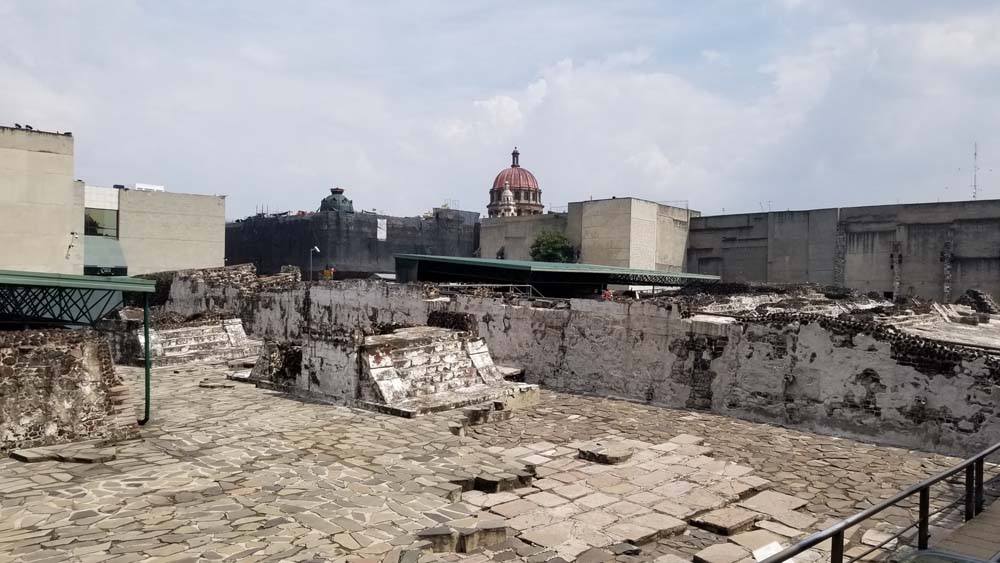
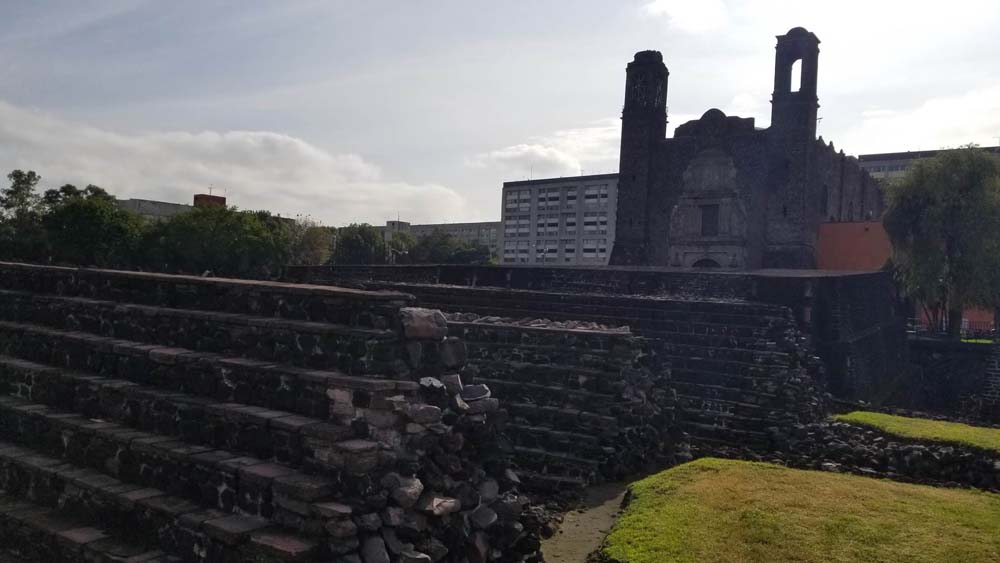

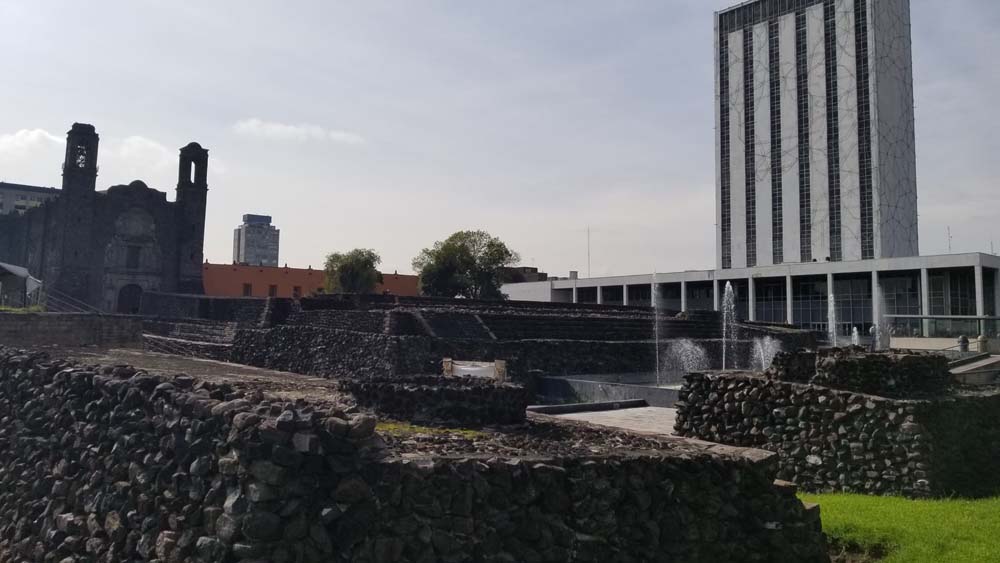

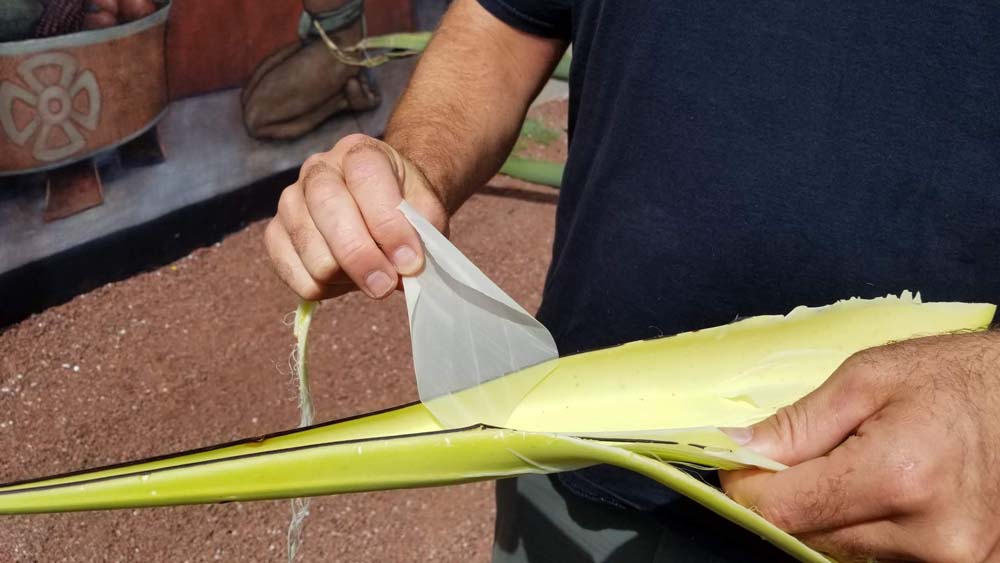

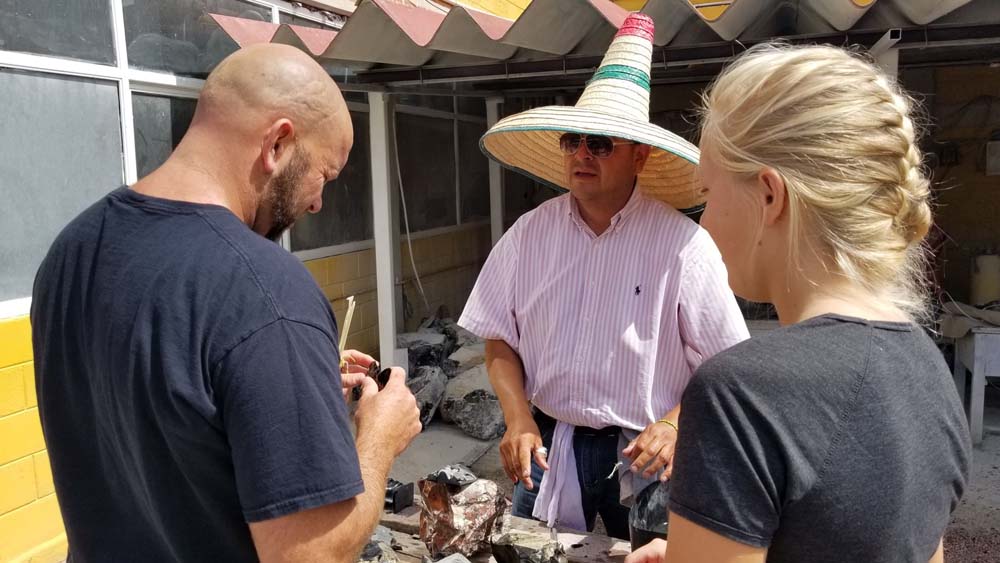

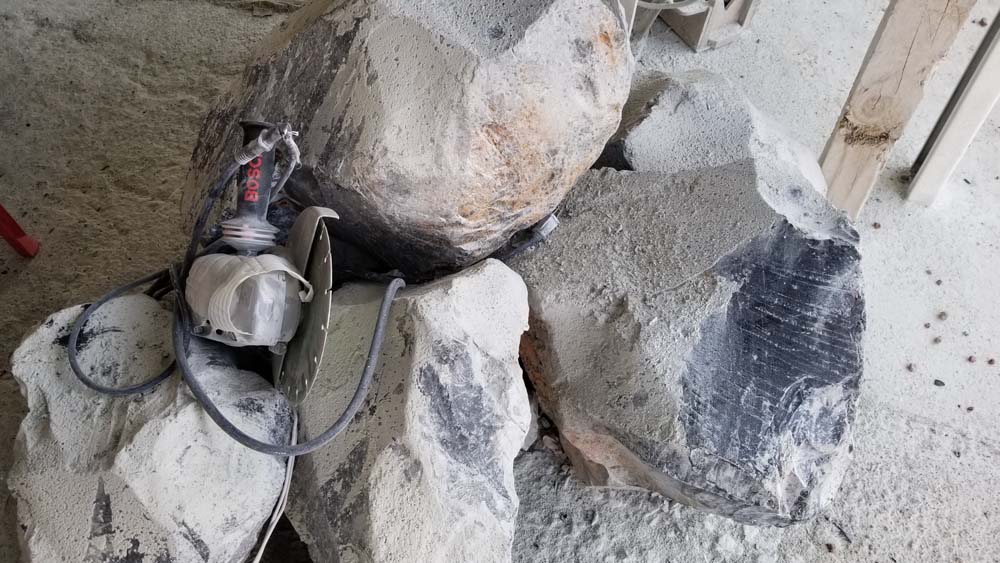
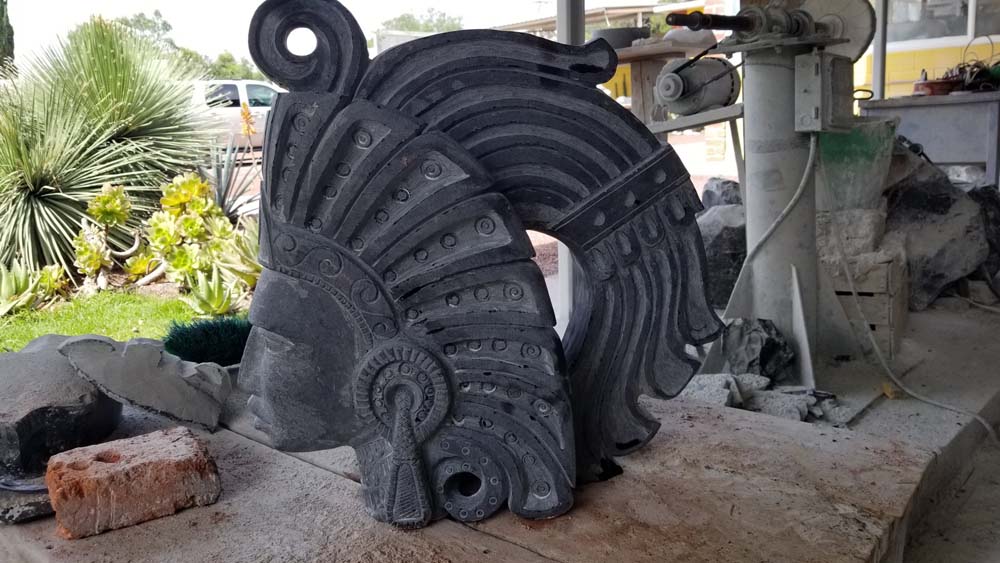


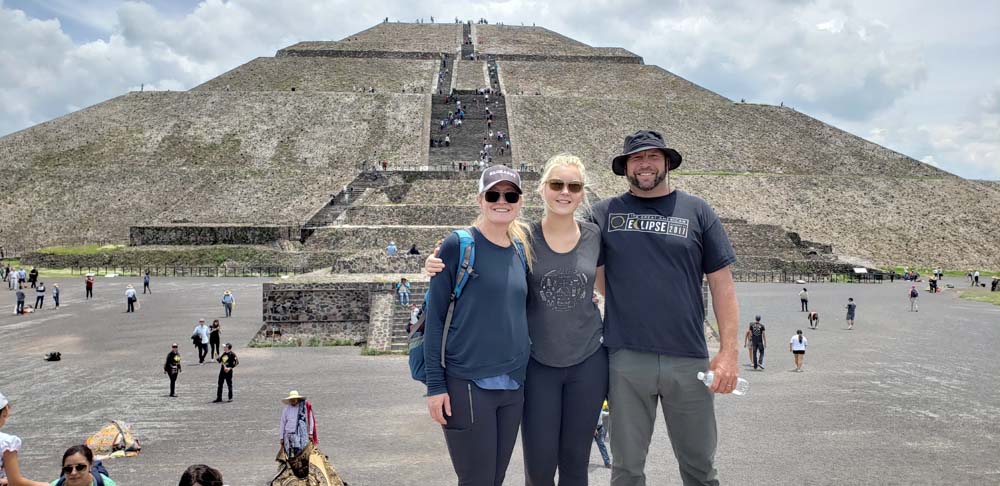
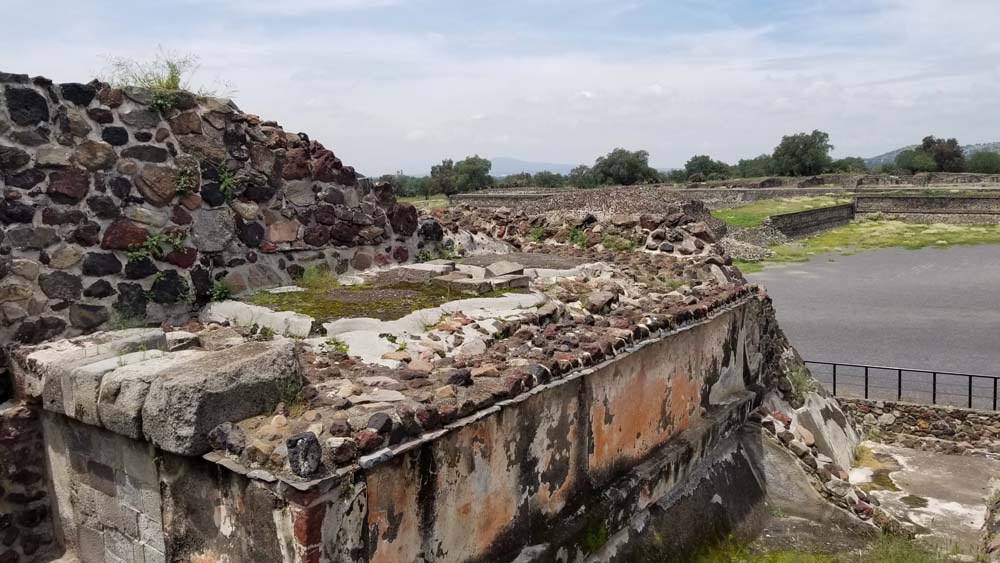

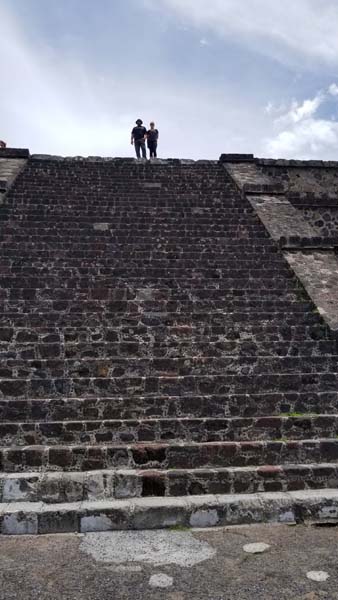

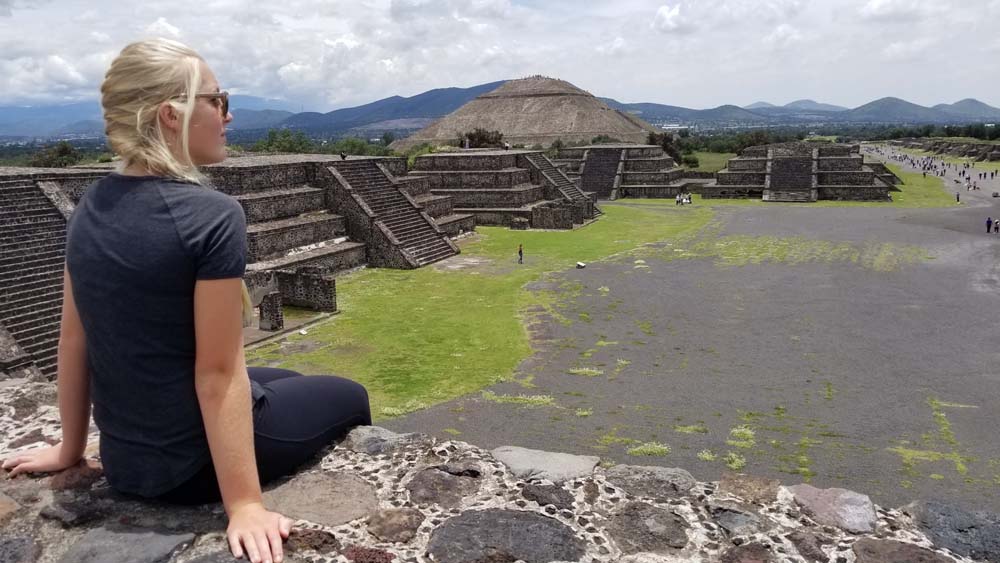

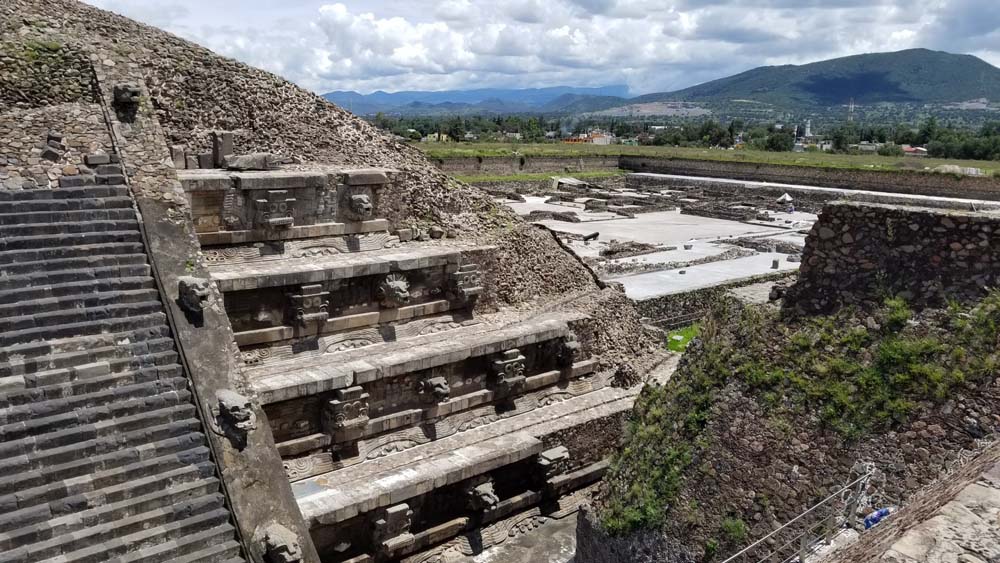

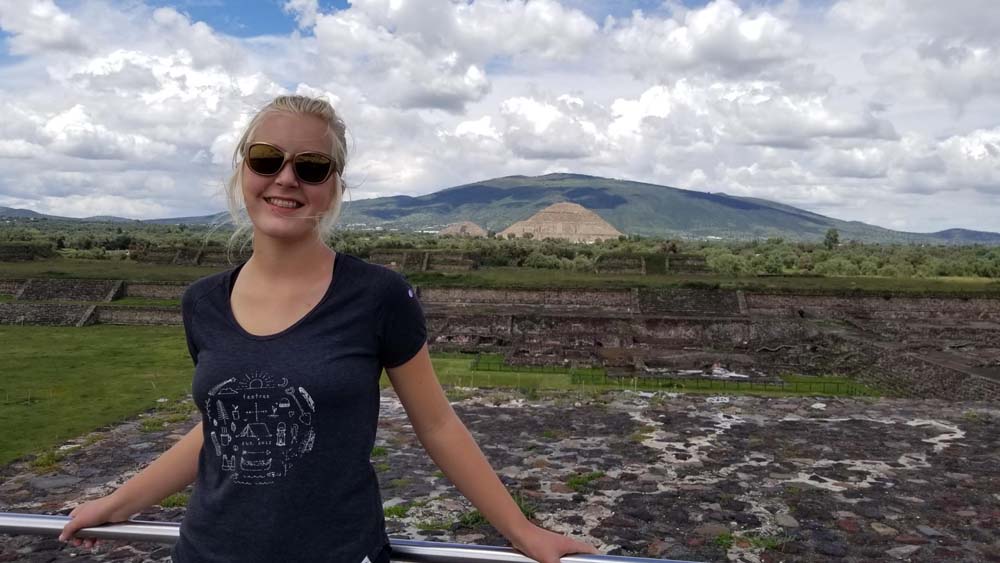
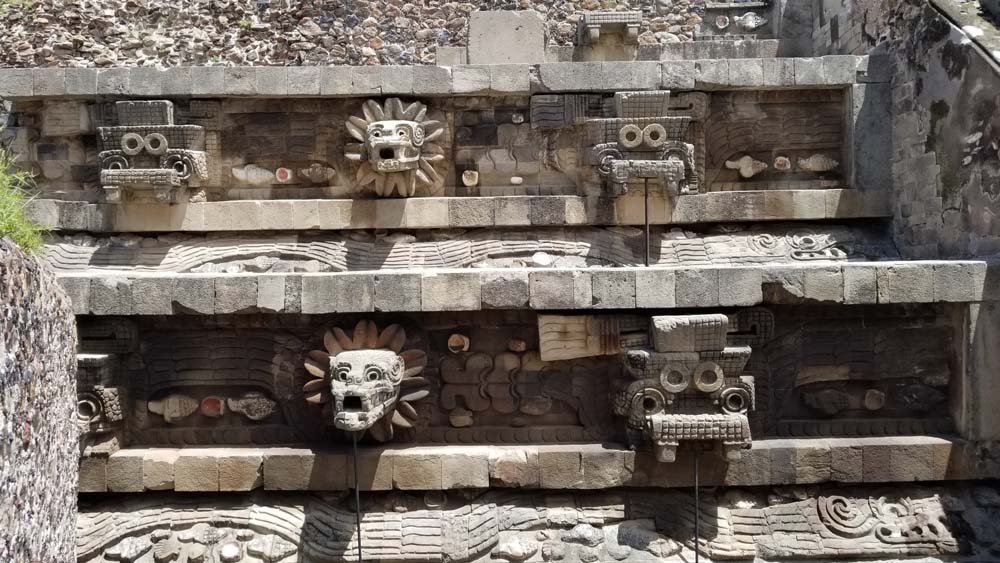
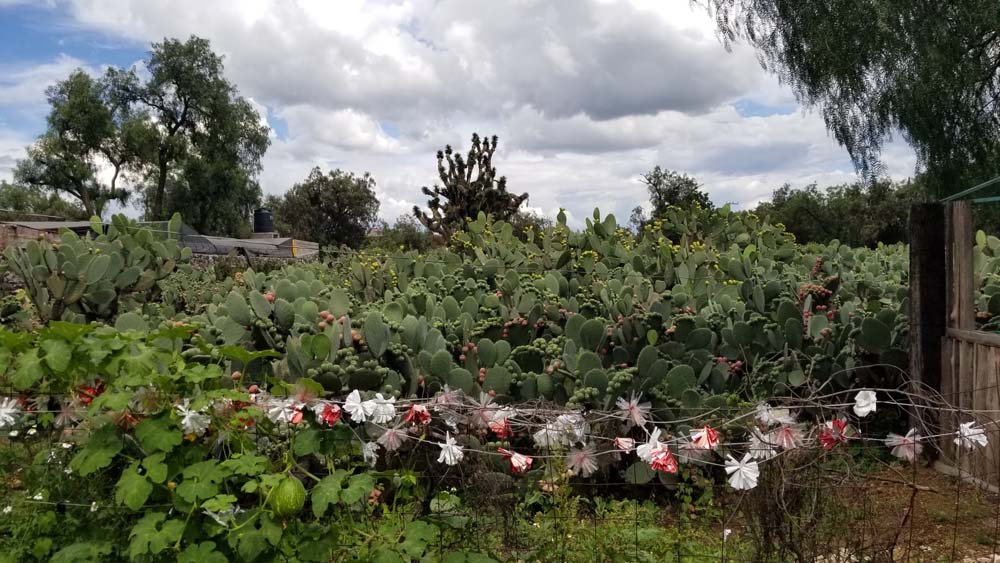
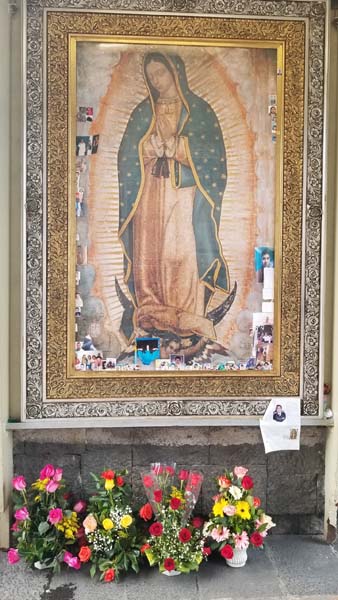
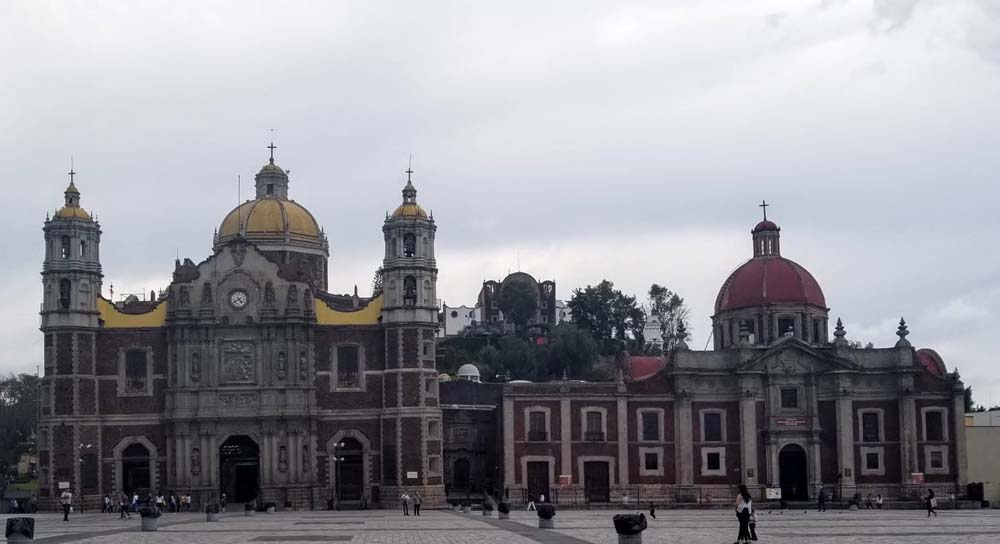
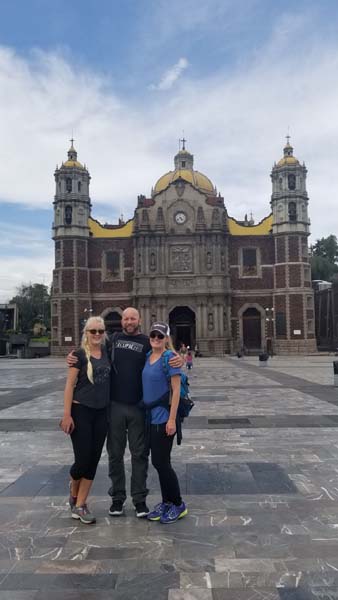

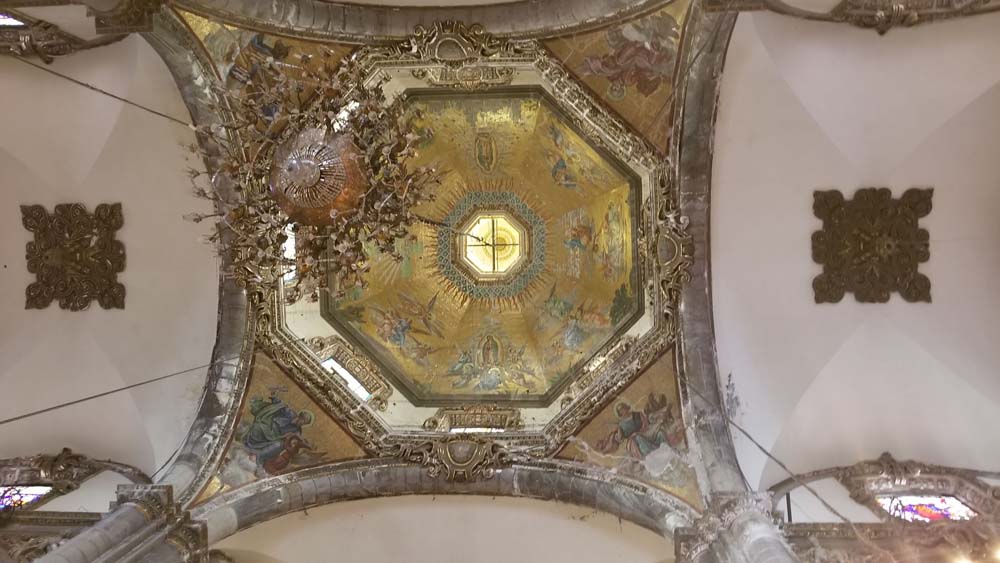
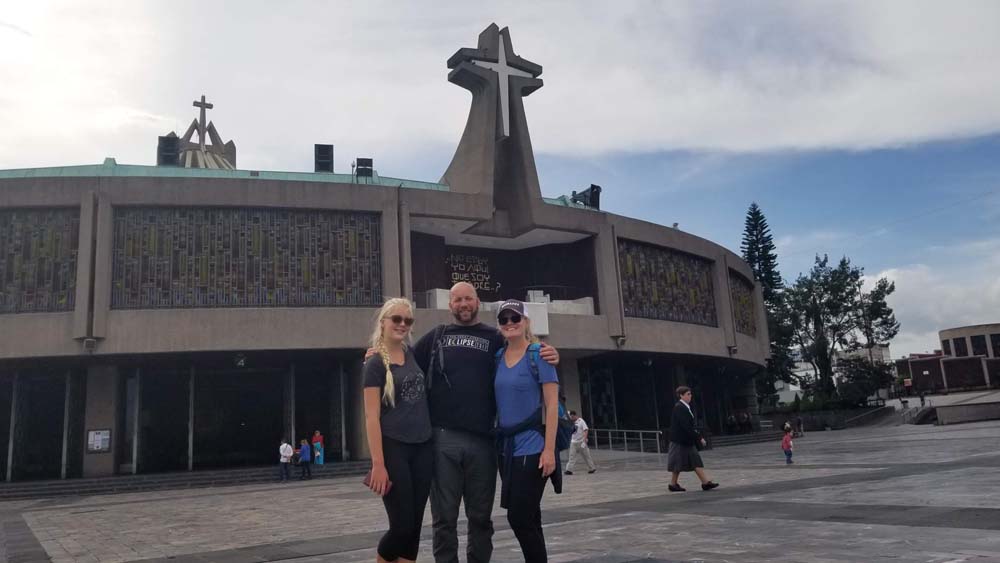

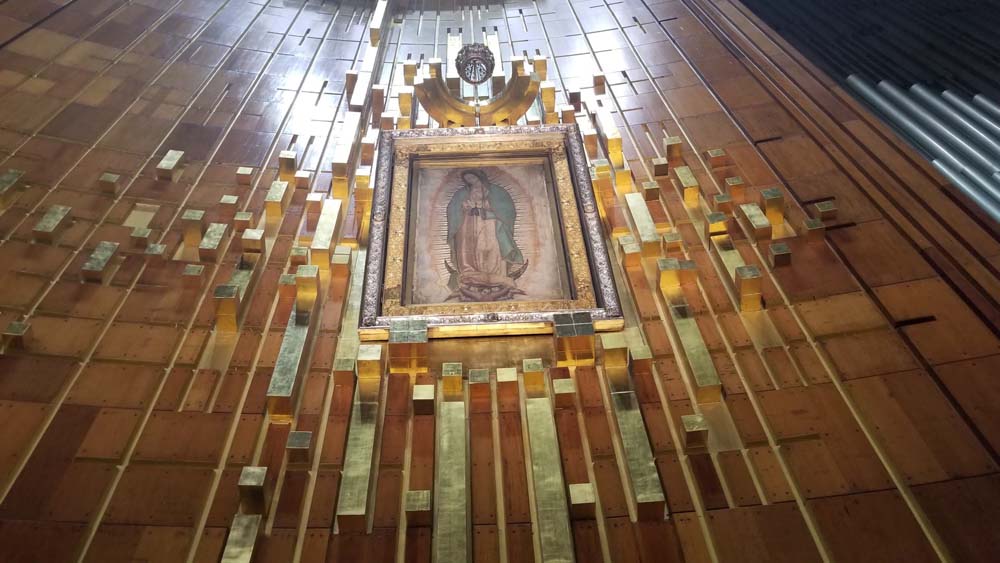
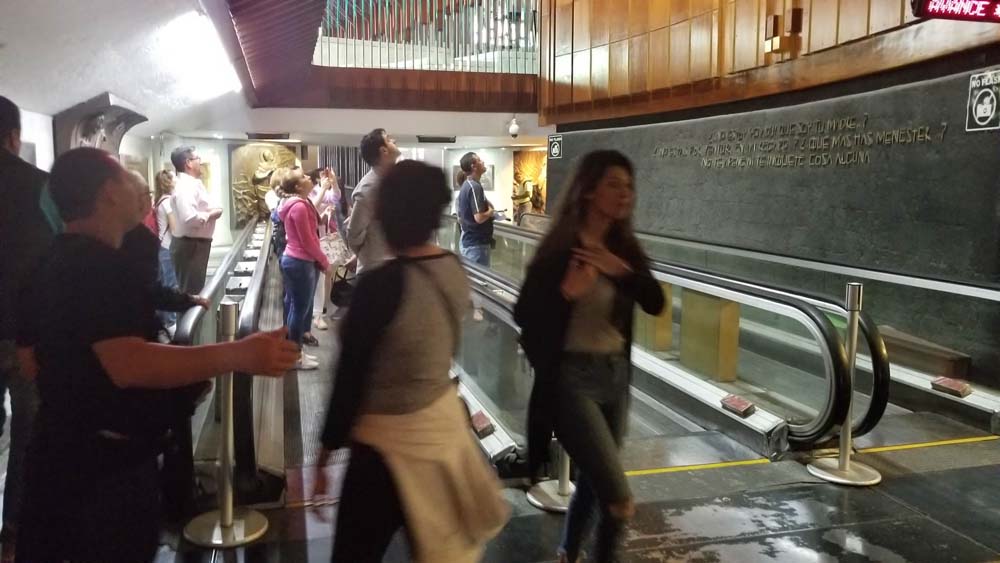

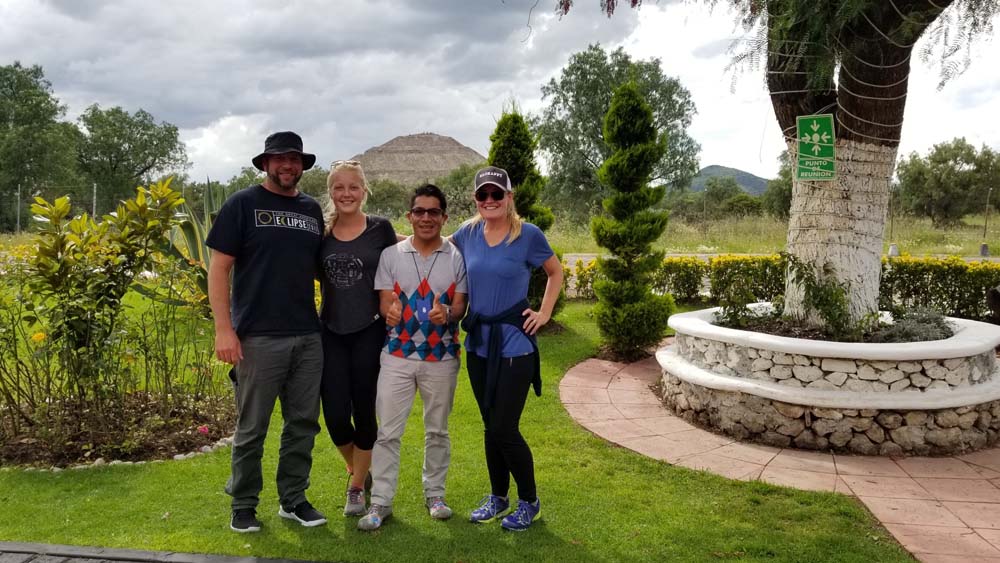
Hi, very nice website, cheers!
——————————————————
Need cheap and reliable hosting? Our shared plans start at $10 for an year and VPS plans for $6/Mo.
——————————————————
Check here: https://www.good-webhosting.com/